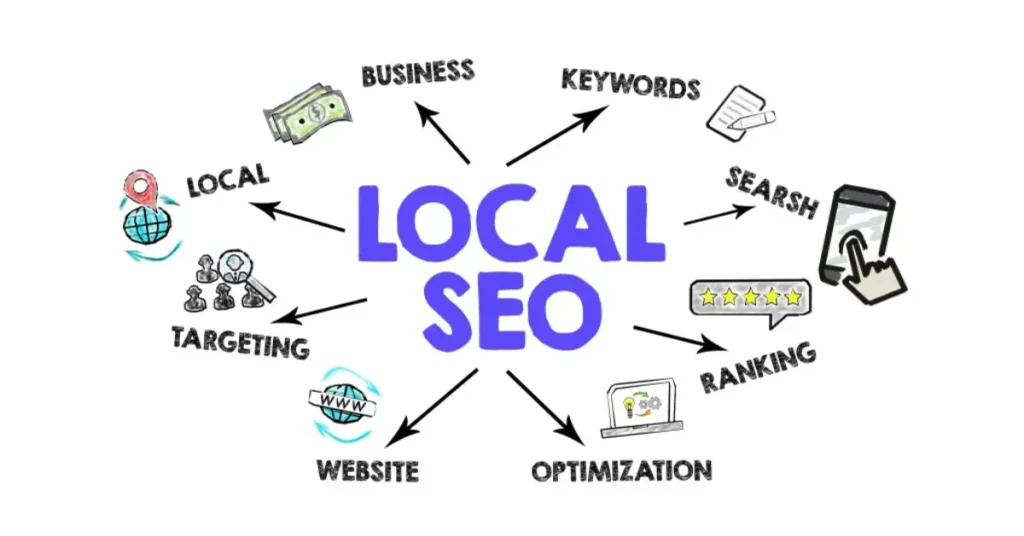Ahrefs domain authority is the number one metric my clients in Trichy ask me about. You launch a website. You design it well. You write good content. But Google still ignores you. Why? The answer often lies in your “authority.” Imagine you open a new textile shop in Coimbatore. No one knows you. But if a famous actor or a trusted local politician visits your shop and recommends it, suddenly, people trust you.
Search Engine Optimization (SEO) works the same way. Google does not trust new websites immediately. It needs “recommendations” from other trusted websites. We call these recommendations “backlinks.” Ahrefs, a popular SEO tool, created a score to measure these recommendations. They call it Domain Rating (DR). Most people commonly call it Ahrefs domain authority.
In this guide, I will explain what this score is. I will show you why it matters for your business in Tamil Nadu. I will also teach you how to improve it without cheating.
What is Ahrefs Domain Authority?

Let us clear up a common confusion first.
Domain Authority (DA) is actually a term from a company called Moz. Domain Rating (DR) is a term from Ahrefs.
Since Ahrefs is now the most active web crawler after Google, most SEO experts use Ahrefs metrics. When you search for “Ahrefs domain authority,” you are actually looking for Domain Rating (DR).
The Scorecard (0 to 100)
Ahrefs gives your website a score between 0 and 100.
- 0: You just started. You have no links.
- 100: You are Facebook, Google, or Wikipedia.
This score is logarithmic.
What does that mean?
It means going from a score of 10 to 20 is easy. Going from 70 to 80 is very hard.
Think of it like cricket. Scoring your first 10 runs is usually quick. But scoring a century against a strong bowling attack takes much more skill and effort.
Is it a Google Ranking Factor?
No. Google does not use Ahrefs’ number to rank you. Google has its own secret calculations. However, Ahrefs tries to mimic what Google sees. If your Ahrefs score is high, it usually means your Google rankings are high too. It is a thermometer. The thermometer does not make you sick, but it tells you if you have a fever.
Why Tamil Nadu Businesses Should Care

I meet many business owners from Madurai, Salem, and Chennai. They often say:
“Sir, I have a shop on the main road. Why do I need this digital authority?”
Here is the truth.
In 2024 and 2025, your customers are searching online first.
If I want to buy “pure Kanchipuram silk sarees,” I search on Google. If your website has a low authority score, you will appear on Page 5. No one goes to Page 5.
The Trust Signal
High Ahrefs domain authority tells me two things:
- Credibility: Other websites trust you enough to link to you.
- Staying Power: You are not a spam website that appeared yesterday.
For a competitive market like Chennai, this score is a filter. If you run a SaaS company in OMR, you compete with global brands. You need a high score to survive.
If you run a bakery in Srirangam, your competition is lower. You might only need a score of 10 or 15 to rank #1 locally.
The Mathematics: How Ahrefs Calculates It
I will keep this simple. You do not need a math degree to understand this.
Ahrefs looks at Backlinks.
A backlink is a link from another website to your website.
The Formula in Plain English:
- Count the friends: How many unique websites link to you?
- Check the friends’ status: Are these popular websites (High DR) or unknown blogs (Low DR)?
- Check the exclusivity: Does this popular website link to everyone, or just you?
The “Juice” Analogy
Imagine a glass of mango juice.
- Website A has a huge jug of juice (High Authority).
- Website A links to Your Website. It pours some juice into your glass. Your authority goes up.
Now, imagine Website A links to 1,000 other websites too. It has to split that juice 1,000 ways. You only get a tiny drop.
But if Website A only links to You, you get the whole glass.
Key Takeaway: You want links from high-authority sites that do not link to too many other people.
Ahrefs Domain Authority vs. Moz Domain Authority

You will hear both terms. I use Ahrefs for my clients in Trichy because their index is fresher. They find new links faster than Moz. Here is a quick comparison table to help you decide.
| Feature | Ahrefs Domain Rating (DR) | Moz Domain Authority (DA) |
|---|---|---|
| Scale | 0-100 | 1-100 |
| Focus | Pure link strength | Predicts ranking ability |
| Updates | Very fast (Daily) | Slower (Monthly/Weekly) |
| Accuracy | High for link profile | High for potential traffic |
| Best For | Technical link building | General overview |
My advice: Stick to one metric. If you start checking DR, do not switch to DA halfway through. It will confuse you.
What is a “Good” Score?
This is the wrong question.
You should not ask, “Is 50 a good score?” You should ask, “Is my score higher than my competitor’s?”
Let me give you real context for Tamil Nadu.
Scenario 1: The Local Hero
- Business: A plumbing service in Thillai Nagar, Trichy.
- Competitors: Other local plumbers. Most have no website or very bad sites.
- Target Score: DR 5 to 10.
- Why: You only need to beat the local guys. A few links from local directories like Justdial or Sulekha might be enough.
Scenario 2: The State Leader
- Business: A chain of hotels in Kodaikanal and Ooty.
- Competitors: MakeMyTrip, Goibibo, and large hotel chains.
- Target Score: DR 30 to 50.
- Why: You are fighting big aggregators. You need serious links from travel blogs, news sites (like The Hindu or Dinamalar), and tourism boards.
Scenario 3: The Global Player
- Business: A software export firm in Chennai.
- Competitors: Companies in Bangalore, the USA, and Europe.
- Target Score: DR 60+.
- Why: The tech space is crowded. Everyone knows SEO. You need a very strong profile to stand out.
Do not chase Amazon’s score (DR 96). Chase the shop across the street.
How to Check Your Ahrefs Domain Authority
You do not always need to pay. Ahrefs has a free tool.
- Go to the Ahrefs Website Authority Checker.
- Type in your website URL.
- Click “Check Authority.”
It will show you your DR and the number of backlinks.
If you see a score of 0 or N/A, do not panic. It just means your site is too new, or Ahrefs has not found your links yet.
How to Improve Your Score (The Real Strategy)

This is the part where I share the secrets I use for my clients. Increasing your Ahrefs domain authority takes work. There is no magic button.
1. Create “Linkable Assets.”
People do not link to “Home” pages. They link to useful information.
- For a Hospital: Write a guide on “Dengue Prevention Tips for Tamil Nadu Monsoon.” Local news sites might link to this.
- For a Real Estate Agent: Create a chart showing “Land Price Trends in Trichy 2020-2025.” People love data.
When you create value, people link to you naturally.
2. Local Digital PR
In Tamil Nadu, we have many strong regional news portals.
- Vikatan
- Dinamalar
- Daily Thanthi
- The Hindu (Tamil/English)
If you launch a new product or do a charity event, send a press release to these editors. A link from a site like The Hindu is gold. It has massive authority. Even one link from there can boost your DR significantly.
3. Reclaim Lost Links
Sometimes, people mention your brand but forget to link.
I use tools to find mentions of “Your Company Name.” Then, I email the writer:
“Hi, thanks for mentioning us. Could you please make that text clickable so readers can find our site?”
This is the easiest win. You already did the hard work of getting mentioned.
4. Broken Link Building
This is a classic strategy.
- Find a website in your niche that has a “Resources” page.
- Check for links that are broken (give a 404 error).
- Email the owner: “Sir, I noticed this link is broken. I have a similar article on my site. You can link to me instead.”
You help them fix their site, and you get a backlink. Win-win.
The “Vanity Metric” Trap
I must warn you.
I have seen business owners obsess over this number. They check it every morning like the stock market.
High DR does NOT always equal High Sales.
You can buy 10,000 spam links from Russia. Your DR might jump to 50 overnight. But Google will see this. Google will punish you. Your traffic will drop to zero.
My Rule: I would rather have a DR of 20 with real traffic than a DR of 80 with ghost traffic.
Focus on relevance. A link from a small food blogger in Chennai is better for a Chennai restaurant than a link from a big gambling site in Europe.
Ahrefs DR and the 2025 Algorithm Updates
The SEO world changes fast.
In late 2024, Ahrefs updated its calculation. They became stricter. Many sites saw their DR drop by 10 points overnight.
Why? Ahrefs stopped counting “low quality” links. If you had thousands of links from cheap directories, they stopped mattering.
This is good news for honest businesses. It levels the playing field. It means quality wins over quantity.
Future Trend: AI and Search Generative Experience (SGE). Google is using AI to answer questions directly. Ahrefs is adapting to this. In the future, “authority” might also depend on who writes your content (Author Authority), not just the website itself.
Technical SEO: The Foundation
You cannot build a tall building on weak soil.
Before you build links to increase your Ahrefs domain authority, you must fix your website.
- Speed: Does your site load in 3 seconds on a Jio 4G network?
- Mobile Friendly: Most people in Tamil Nadu use mobile phones. If your site looks bad on a phone, no one will link to it.
- SSL: Do you have the padlock icon (HTTPS)? Sites without security are not trusted.
I handle these technical fixes for my clients in Trichy because I know that a slow site wastes all your marketing money.
Case Study: The Wedding Photographer
Let me tell you a story about a hypothetical client, “Raja Photography.”
The Problem: Raja is a great photographer in Salem. His site looked amazing. But his DR was 2. He was on Page 4 of Google. He got zero calls from the website.
The Strategy:
- We did not buy links.
- We wrote a blog post: “Top 10 Wedding Mandapams in Salem.”
- We emailed the owners of those 10 Mandapams.
- Five of them shared the post on their websites and linked back to Raja.
The Result:
- His DR went from 2 to 12.
- He moved to Page 1 for “Wedding Photographer in Salem.”
- He started getting inquiries.
Why it worked: The links were relevant. Mandapams and Photographers are in the same industry. Google understood the connection.
Common Mistakes to Avoid
- Buying Links on Fiverr: Never do this. You will get penalized.
- Ignoring Internal Links: You should link your own pages to each other. It helps spread the authority.
- Inconsistent NAP: Name, Address, Phone number. Ensure your address is the same on your website, Google Maps, and Facebook.
How Long Does It Take?
Patience is key.
If you start a link-building campaign today, your Ahrefs domain authority might not move for 3 months. Ahrefs needs time to crawl the web. Google needs time to process the data.
Think of it like farming. You plant the seeds (links) today. You water them (content). You harvest the crop (rankings) later.
Comparison: Low DR vs. High DR Websites
| Characteristic | Low DR Website (0-20) | High DR Website (50+) |
|---|---|---|
| Age | Usually New | Established |
| Content | Thin or irregular | Deep, expert content |
| Traffic | Low / Social Media dependent | High Organic Traffic |
| Trust | Google verifies often | Google trusts instantly |
| Risk | Hard to rank for competitive terms | Easy to rank for competitive terms |
Frequently Asked Questions (FAQ)
Conclusion
Ahrefs domain authority is a compass. It tells you if you are heading in the right direction. But it is not the destination.
The destination is Sales. The destination is Calls. The destination is Growth.
Do not get addicted to the score. Use it to measure your progress against your competitors in Tamil Nadu. Focus on building genuine relationships, creating helpful content, and serving your customers. The links (and the score) will follow.
Building authority is hard work. It requires technical skill, good writing, and a lot of patience. You can try to do it alone, but you might make mistakes that hurt your site.
Ready to Grow Your Business in Tamil Nadu?
I am a digital marketing professional based in Trichy. I help businesses across Tamil Nadu—from Chennai to Kanyakumari—build real authority and get more customers.
I do not just chase numbers; I build systems that bring you sales.
My Services:
- SEO (Search Engine Optimization): Rank higher on Google safely.
- Google Ads: Get immediate leads while your SEO builds up.
- Web Design: Fast, mobile-friendly sites that Google loves.
My packages are fully customizable based on your budget and needs.
Would you like me to audit your current Ahrefs score for free?
Contact me today for a one-to-one consultation. It is completely free. Let us discuss how we can make your business the authority in your niche.
Book Your Free Consultation Now




